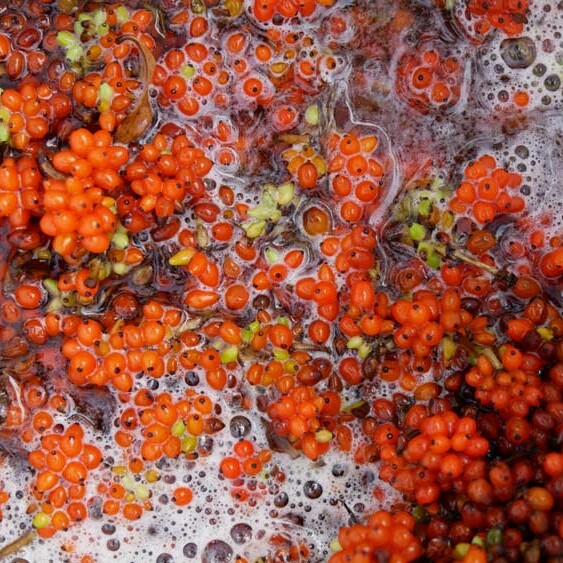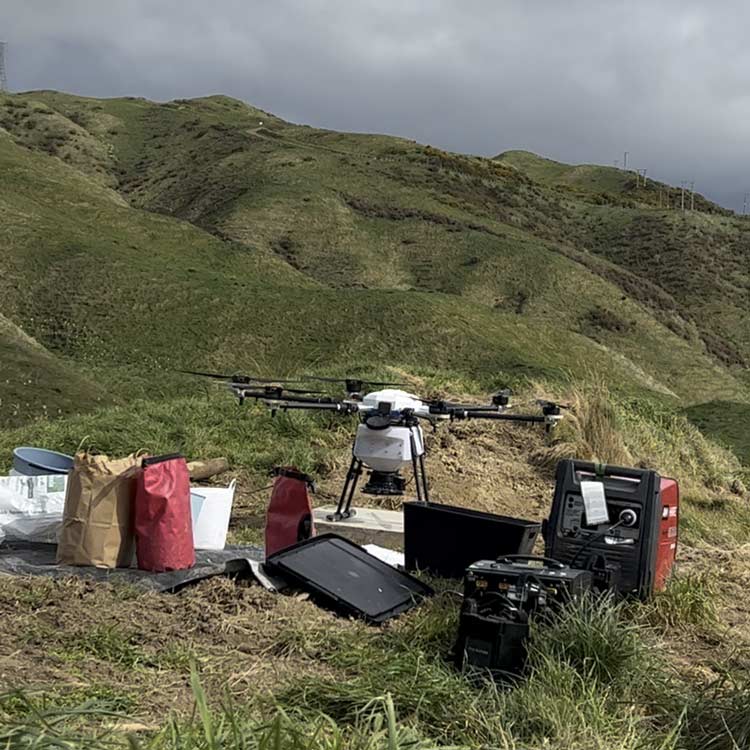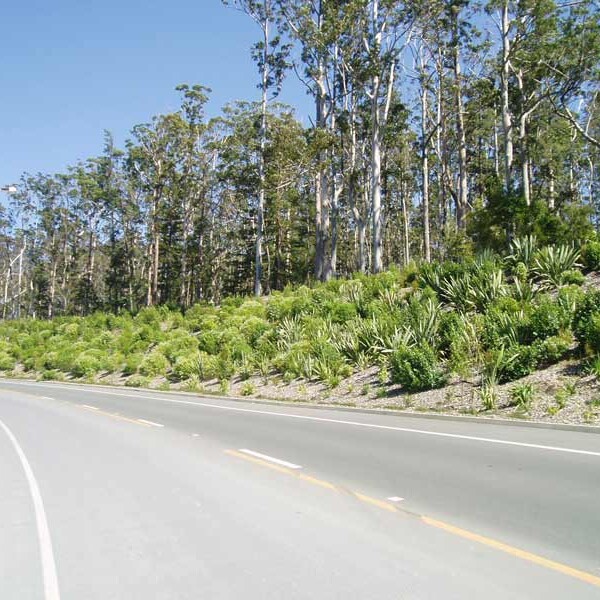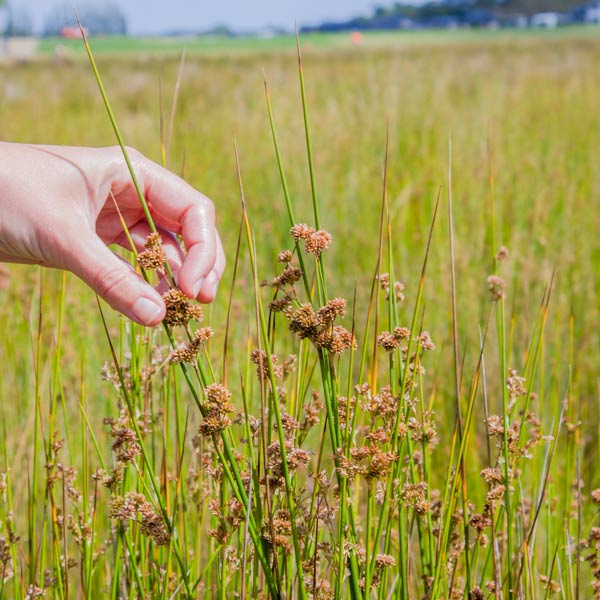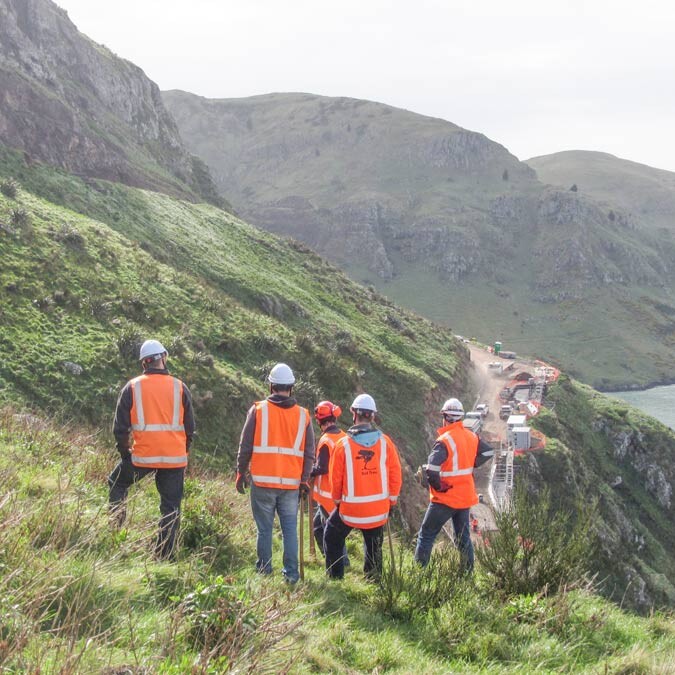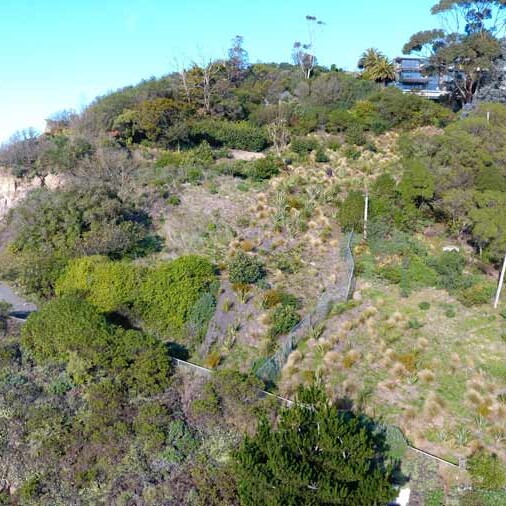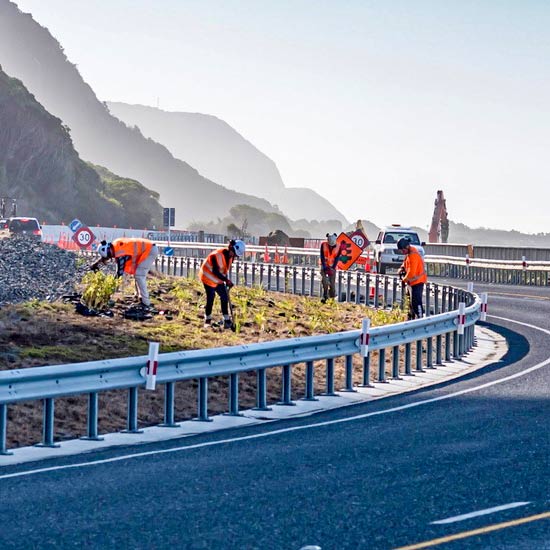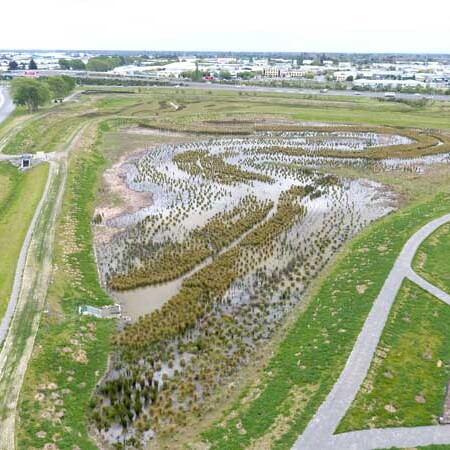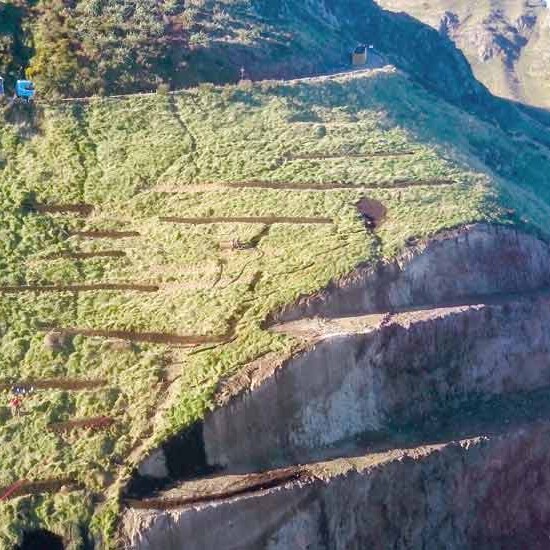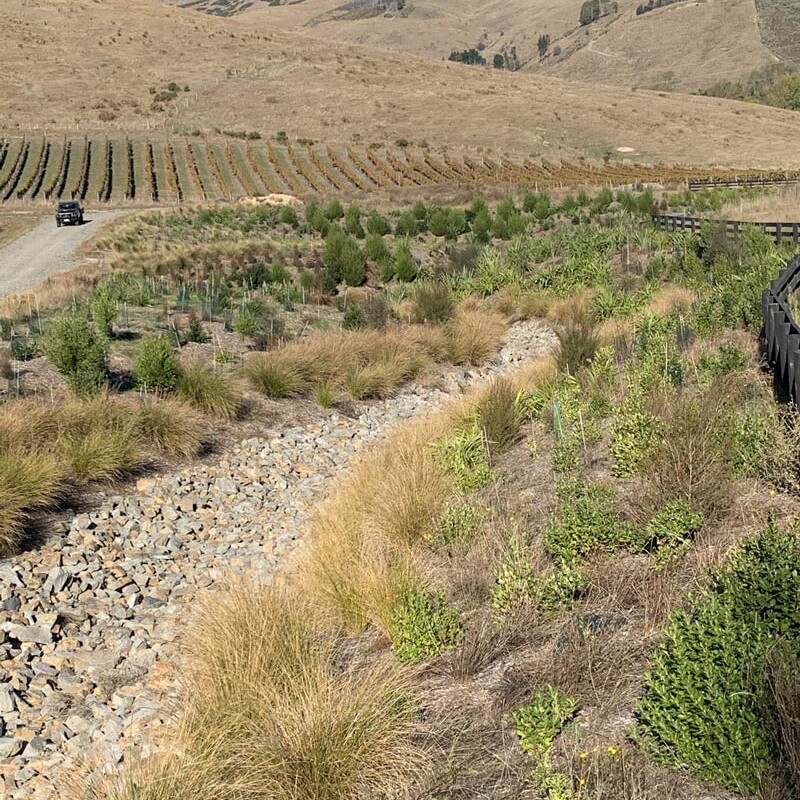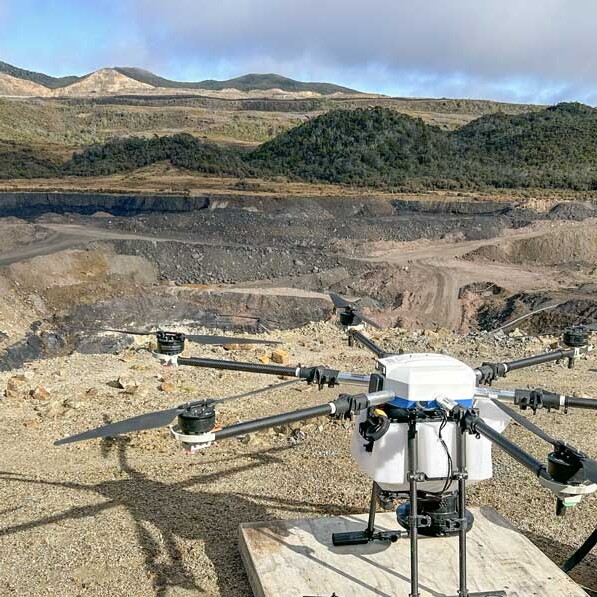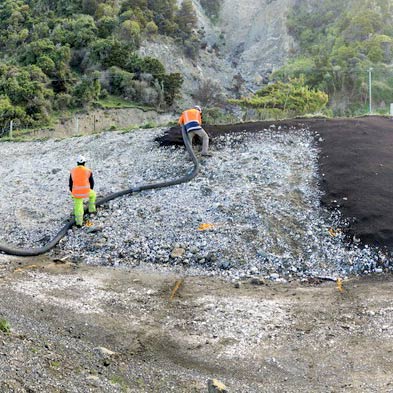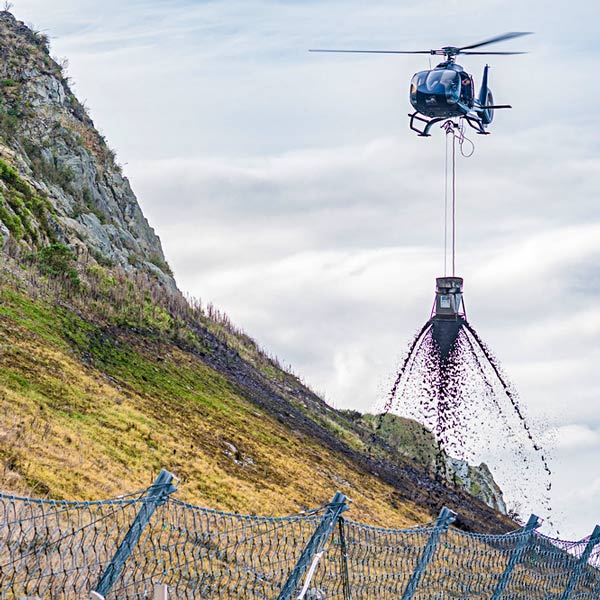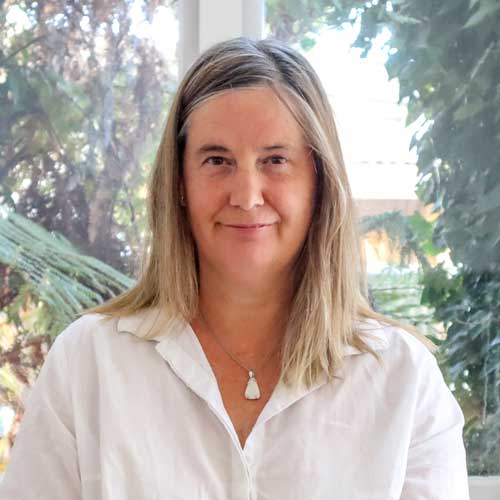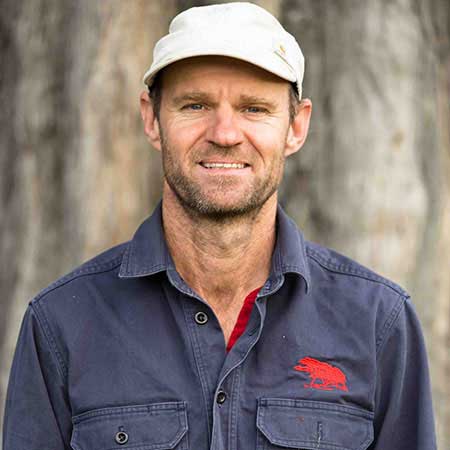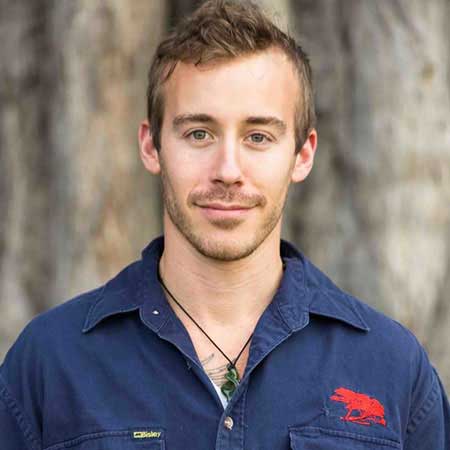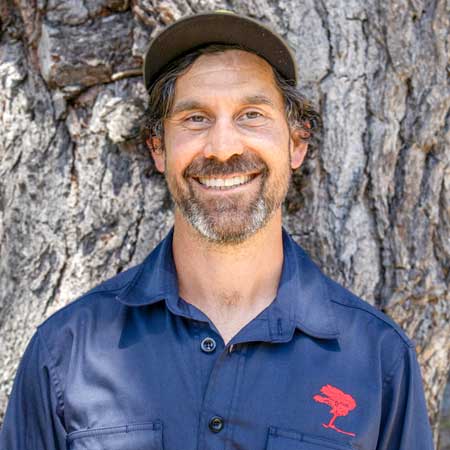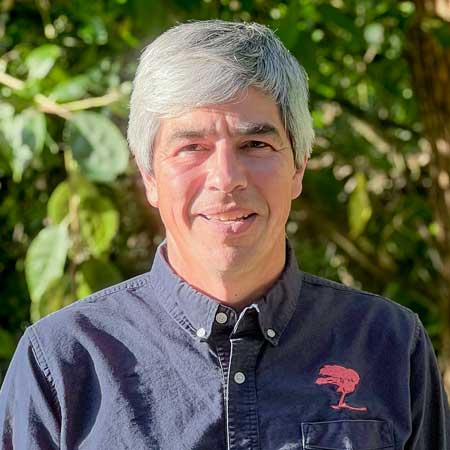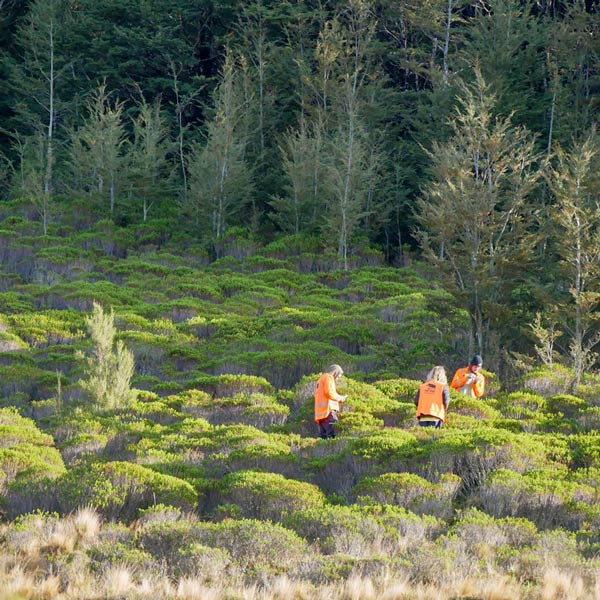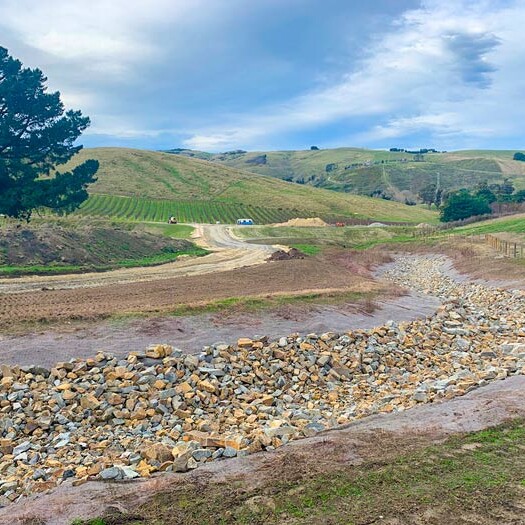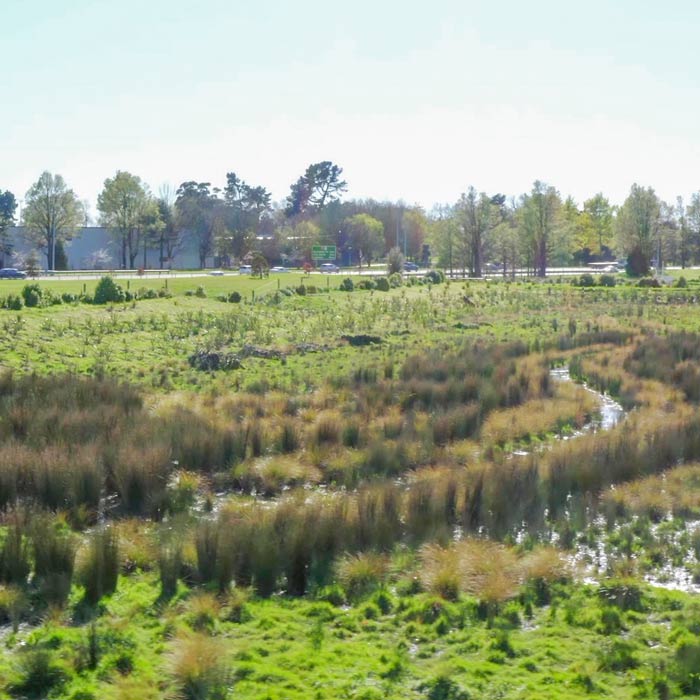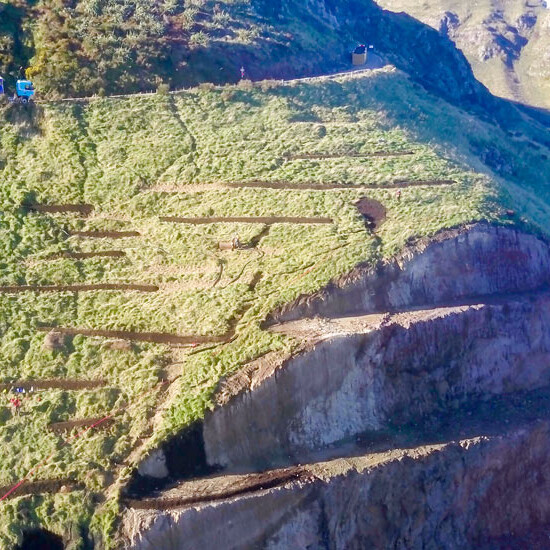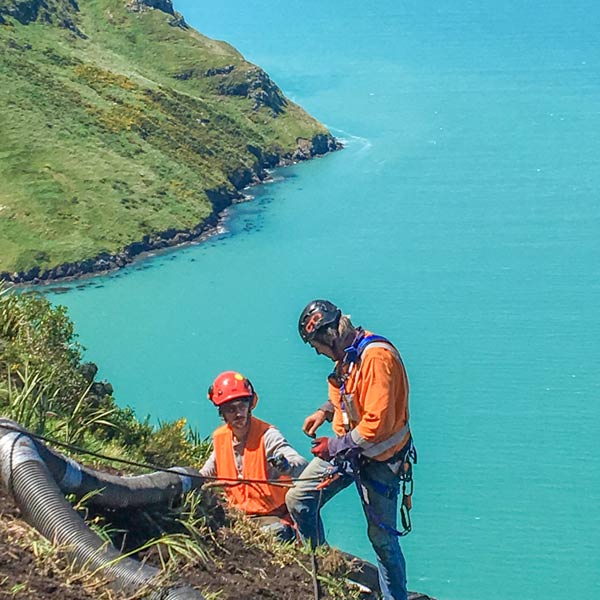Methods
Leading the way in the large scale application of restoration technologies.



Manaaki Taiao
Our methods
Red Tree incorporates three highly effective ecological restoration methods:
Each project is carefully tailored to the unique requirements of its specific location. Whether facing expansive landscapes, challenging topographies, climate, or budgetary considerations, we methodically devise strategies that leverage one or a combination of these methodologies to yield exceptional outcomes.
Discover how we blend innovation, expertise, and advanced technology, setting a new standard for ecological regeneration.
Enviroblanket® Direct Seeding
Enviroblanket® is game-changer in large-scale restoration. Biodiversity holds the key to sustainability, and the rapid establishment of native ecology provides an immediate response to climate related events.
This technology offers an innovative, cost-effective framework for large-scale environmental restoration, even in high-risk, remote areas and in a wide variety of environmental zones including wetlands, riparian margins, and coastal forests.


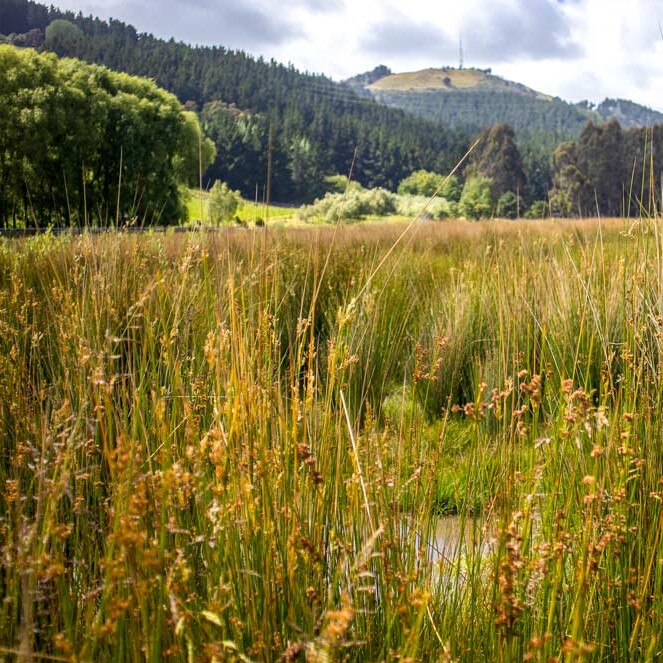
Mimicking Nature’s Blueprint
Red Tree’s Enviroblanket® technology paves the way for rapid, resilient plant growth and ecological establishment. Just as humans thrive within supportive and diverse communities, plants flourish when nurtured in their endemic environment.
The Enviroblanket® mirrors Nature’s succession at a micro-scale, creating optimal conditions for seed germination.
Imagine the rich, dark matting of the forest floor, abundant in seeds and microbial life, this is the very medium from which new plant-life springs forth.
Harnessing Nature’s self-design capacity
The profile of the Enviroblanket® reveals layers of species and growth rates; taproots penetrating deep into the earth, fibrous roots binding the surface, nurse crops protecting and supporting slow-growing natives and canopy species emerging above, creating an umbrella for life below.
This collaborative matrix stabilizes the land, prevents erosion and sedimentation, protects waterways, creates habitats for birds and insects and sequesters carbon.
Proven to be an incredibly effective solution
The Enviroblanket® technology provides a unique framework for environmental restoration on a large scale, with less inputs, and the ability to access high-risk or remote areas. This method initiates the remediation process within one year, collecting seed in autumn, sowing in winter, and achieving germination in spring.
Advantages at a glance
Minimises erosion, slows runoff and uniformly disperses sheet flow
Establishes permanent vegetation across diverse soil profiles, gradients, and ecological regions
Accelerates native species establishment and carbon sequestration
Time and cost-effective compared to traditional methods
Can be hybridised with traditional systems
Establish vegetation in challenging areas, even those requiring rope or aerial access
Process focuses on seed psychology, nutrient profiles, and biomimicry
Fungal and microbacterial inoculation increases biogeochemistry health
Remarkably efficient installation
The Enviroblanket installation process is prescriptive, based on optimal windows of seeding, cultivation techniques, herbicide timing, species selection and order of delivery.
Installation methods, whether mechanical, pneumatic, aerial, or manual, are chosen based on ecological factors, topography, climate, geology, elevation, and local resources.
A custom blend seed mix containing native pioneer species is directly broadcast on site, removing the nursery process and accelerating project timelines.
See our case studies or phone 03 365 2323 to learn more about Enviroblanket® solutions.
Specialist Drone Technology
At Red Tree, we’re ushering in a new era of smarter environmental restoration. Our commitment to preserving and rejuvenating the natural world has led us to integrate specialist drone technology as a powerful tool throughout the restoration process.
From project planning, to installation and ongoing monitoring and maintenance, our drones facilitate efficient, accurate, and safe ecological restoration.

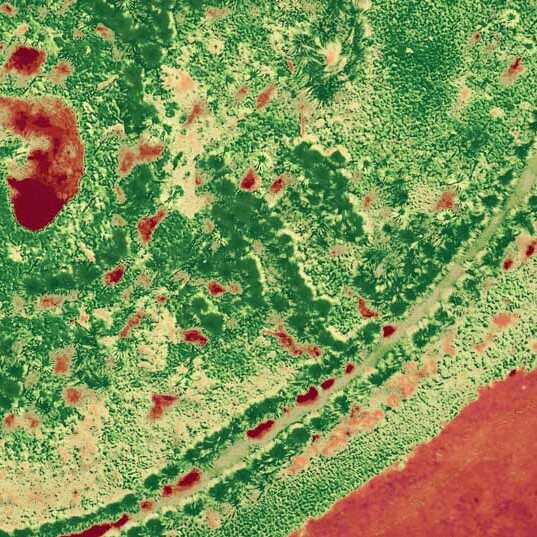
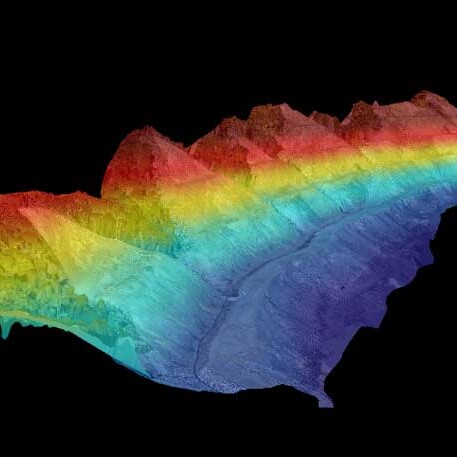
Here’s how our drone technology is revolutionising ecological restoration:
Next Generation Insight
Red Tree’s specialist drones reveal critical insights into the topography, ecological health, and biodiversity of a site. They provide a bird’s-eye view, granting us unprecedented insights into the geology, ecological health, and diversity of a site. No two restoration projects are the same, and our technology enables us to make precise decisions regarding species selection, hydration requirements, and nutrient inputs.
Monitoring and Maintenance
Red Tree’s drones also play a pivotal role in the monitoring and maintenance phase. They collect multi-spectral data from a perspective only they can provide, enabling highly accurate mapping of hydration, pest monitoring, fertilizer application, and weed control. This results in significantly enhanced efficiencies in both time and resource utilisation.
Avian Inspired Seed Dispersal
Much like the role birds perform in forests, our drones have the capacity to disperse seeds and nutrients over expansive areas, even those with challenging access and challenging terrain.
Minimising ground impact and reducing emissions, drones allow us to act swiftly in revegetating disturbed sites. This capability is vital as we navigate an era of increasing climate-related events.
Elevating Health and Safety
Drones are key to improving safety on high-risk sites with steep terrain or difficult access. They keep people out of harm’s way by minimising the need for personnel to navigate unsafe terrain. Drones are a vital part of our commitment to health and safety, ensuring our mission is carried out without compromising anyone’s well-being.
Minimising Carbon Footprint
Our drone technology offers a much more sustainable alternative to traditional methods, significantly reducing reliance on tractors and helicopters.
Utilising highly efficient battery technology and compact fuel-efficient generators, our drones run on just 200 mL of fuel per hectare - remarkable in comparison to conventional machinery.
Maximising Efficiency
Whether it’s spraying, topdressing, or seeding operations, our drones deliver uniform coverage with zero ground disturbance while completing tasks in record time.
Our smart drone technology enables mapping of areas for grid flight patterns and facilitates targeted variable rate applications, enhancing productivity and accuracy.
Additionally, our technology boasts precision vertical cliff spraying, AI-powered mapping and analysis, and smart flight and calibration capabilities, optimising the efficient utilisation of products while minimising time and costs.
Our fleet

Thermal Imaging Drone
The Thermal Imaging Drone is used predominately for pest monitoring, detecting plant health, and reading soil temperatures. This drone adds another layer of data into the Enviroblanket® toolbox to assist germination/seeding timings and pest control operations.

Multispectral Drone
The Multispectral Drone is capable of reading the landscape through non-visible light bands within the electromagnetic spectrum. Photogrammetry is used to amalgamate data into a usable form such as photosynthesis production, soil hydration, plant health, and more.

Agricultural Drone
The Agricultural Drone is used for aerial seeding and spraying. Capable of covering over a hectare in ten minutes, this drone is perfect for low-impact operations, projects within high-risk zones or with limited access, and significantly increasing efficiencies.
See our case studies or phone David Rothe on 021 058 4338 to learn more about drone restoration solutions.
Traditional Re-vegetation
At Red Tree, we’re highly experienced in traditional re-vegetation. Employing time-honoured techniques we’ve proudly hand planted over half a million natives, in a range of environmental zones throughout the country.
Our traditional planting service is now commonly supported by cutting-edge Enviroblanket direct seeding, strategically implemented across many different ecologies from wetlands and riparian margins, to retired pastures.
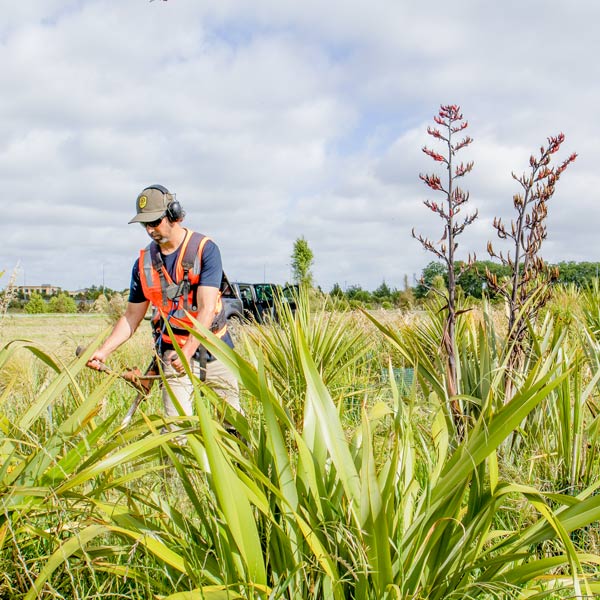
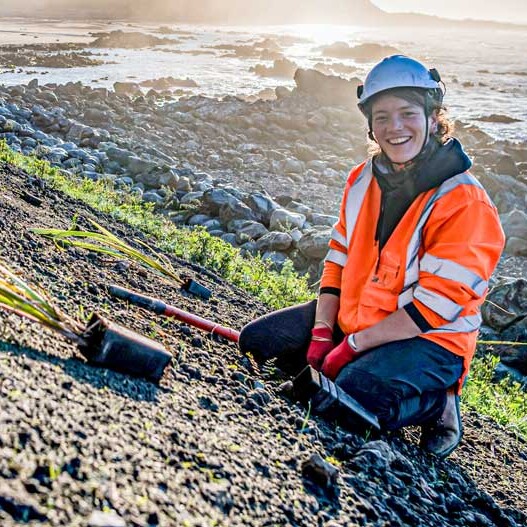

Complimented by Drone Technology
Employing a holistic approach to restoration, we utilise advanced drone technology for precise landscape mapping. This enables us to comprehensively assess and interpret terrain features, facilitating informed species selection for optimal re-vegetation. By understanding the land intricately, we tailor our planting strategies to ensure sustainable, thriving habitats for generations to come.
Ensuring Success
Implementation is spearheaded by our skilled planting team, adhering to industry best practices to achieve exceptional outcomes. Post-installation, we provide ongoing monitoring and maintenance for 3-5 years, utilising a combination of manual methods and selective herbicide application to ensure the continued success of planted areas. With an emphasis on efficiency, safety, and quality, we consistently surpass expectations, boasting plant survival rates exceeding 90%.
Pest Control
Biosecurity is paramount in our projects. Through thorough baseline surveys and strategic control operations, we mitigate the impact of invasive species, safeguarding the integrity of restored ecosystems. Outsourcing pest control operations, our biosecurity partners ensure comprehensive protection, allowing native flora to flourish unhindered.
Enhancing Biodiversity
Traditional planting serves as an excellent compliment to direct seeding, fostering biodiversity by establishing noble trees and podocarps once pioneer canopy cover is established. This approach encourages ecological resilience, nurturing vibrant ecosystems teeming with diverse flora and fauna.
Sustainable Practices
Whether growing our own native plants or collaborating with eco-sourced contract producers, we prioritise sustainability throughout the supply chain. Our commitment to reducing environmental impact extends to site preparation, employing manual and mechanical clearing techniques alongside targeted weed control measures.
See our case studies or phone 03 365 2323 to learn more about traditional re-vegetation solutions.
About
Our journey is one of curiosity and innovation.
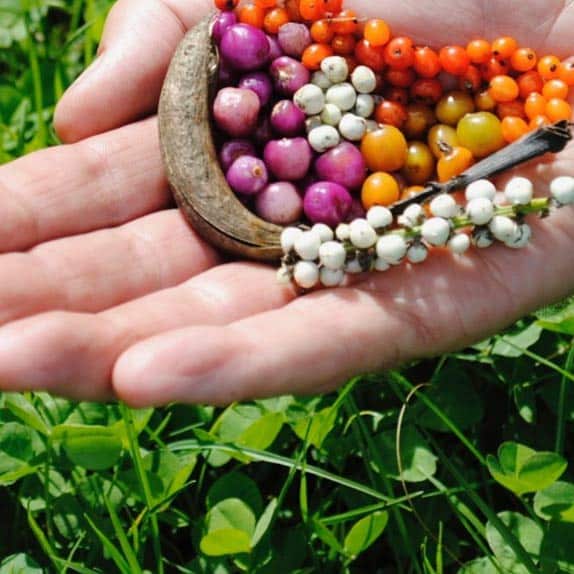

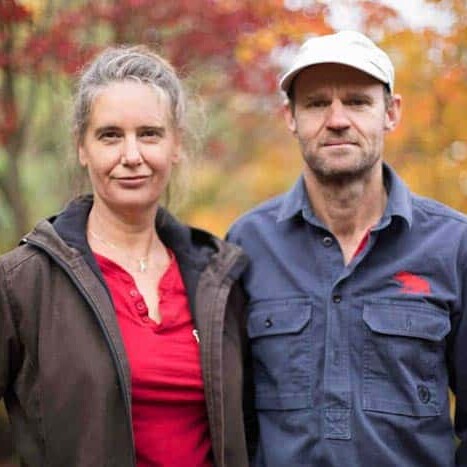
“If we’re to get on top of environmental challenges, we need to get a better appreciation of what we are working with”
ANDREW CUMMINS - DIRECTOR
ABOUT US
Our Founders and Journey.
For Andrew, it all started as a boy watching the drill on the back of the tractor as the barley in spring was sown into the ground. Meanwhile, Michelle’s journey was born from a childhood refusal to believe that the pollution of the river was necessary in order that the industry of the town succeed.
Our journey together has been one of curiosity and innovation, through the pioneering beginnings of the restoration movement in 2000, until today at the leading edge of direct native seeding technology.
Listening to Nature’s Secrets
Nature, the ultimate regenerator, holds many wisdoms. Our personal inquiries and observations have been rewarded as we’ve uncovered some of nature’s intelligence, developing and applying it to remediate ecologies like the earthquake affected lands of Christchurch and Kaikoura as well as wetlands, riparian margins and regional parks across the country.
The future seems poised for a collective journey as we all confront the changing climate, guided by human intelligence, technology and nature’s regenerative power.
Track Record
Having planted and hundreds of thousands of native plants over the past 20 years, we are now building upon the success of known and tested native restoration methods, with ongoing field research and industry innovation.
A Pivotal Development
In June 2017, Land Information New Zealand (LINZ) entrusted us with the native plantings in the post-quake Christchurch Port Hills Red Zone.
Compacted substrates and exposed gradients presented a considerable challenge to plant survival, compelling us to pioneer the Enviroblanket direct seeding of native species and compost-based revegetation technologies.
Key developments in our journey.
Proven Scalability
Our systems have been proven to effectively scale with increasingly larger projects successfully delivered year on year. From 100m2 restoration projects in 2017 to 1000m2 projects in 2018, 10,000m2 projects in 2019 to 100,000m2 restoration projects in 2020.
Pioneering ecological restoration for:
20+ years
Natives traditionally planted:
600,000+
Plastic waste saved by direct seeding and our plant pot recycling programme:
8.5+ tonnes
Enviroblanket®
direct seeding installed:
30+ hectares
Projects completed:
Nationwide
Our leadership team
Michelle Cummins
CHIEF EXECUTIVE OFFICER
Michelle is Red Tree’s CEO and has led the company’s vision from day one. She has a strong connection to nature which allows her to understand native ecology and the sensitive interactivity humans share with it. Michelle has 20+ years’ experience in horticultural and native ecological designs along with a passion for connecting communities to the native ecology they live in.
Contact Michelle
michelle@redtree.co.nz
Andrew Cummins
Horticultural Director
Andrew Cummins is Red Tree’s Horticultural Director and a leading Ecological Restoration Specialist with 20+ years experience. Andrew’s extensive research and development throughout his life led him to develop the Enviroblanket® direct seeding methodology.
Andrew is continually undertaking research and development in biomimicry, native seed psychology and the refinement of Enviroblanket® application, maintenance and monitoring.
Contact Andrew
021 775 468
andrew@redtree.co.nz
David Rothe
Contract Manager / Ecological Engineer
David Rothe is Red Tree’s Contract Manager, specialising in geotechnical, ecological, and natural resources engineering. David manages contractual obligations, client relations, planning, and reporting. As well as working closely with clients such as Christchurch City Council and Greater Wellington Regional Council to provide innovative environmental solutions, David is our Chief Drone Pilot and manages all drone operations within the company.
Contact David
021 058 4338
david@redtree.co.nz
Morgan Fox
CHRISTCHURCH Operations Manager
Morgan is Red Tree’s Operations Manager at our Christchurch base. He looks after the mahi on the ground; managing our team, overseeing all health and safety, coordinating our volunteers, and collaborating with contractors to make things happen. With a Diploma of Natural Resources in Environment and Ecology, Morgan applies his management experience and love for nature to keep the Red Tree wheels turning.
Contact Morgan
021 223 3363
morgan@redtree.co.nz
David Knight
Wellington Operations Manager
David is Red Tree’s Wellington Operations Manager. Coming from a science and education background, he focuses on strategic planning to create efficiencies in operational plans.
He monitors plant health and maintenance requirements across Wellington regional projects and communicates effectively with client representatives. Additionally, David leads the native seed collection team for eco-sourcing in the Wellington region.
Contact David
027 350 4388
david.knight@redtree.co.nz
Services
Seeds into forests and forests into legacy.
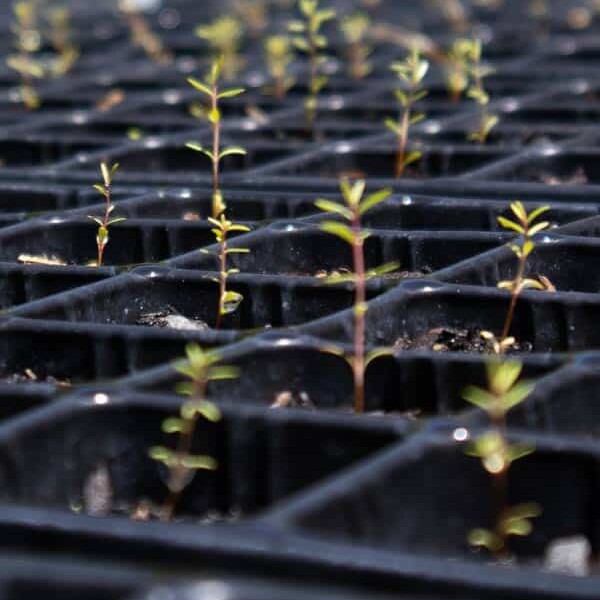
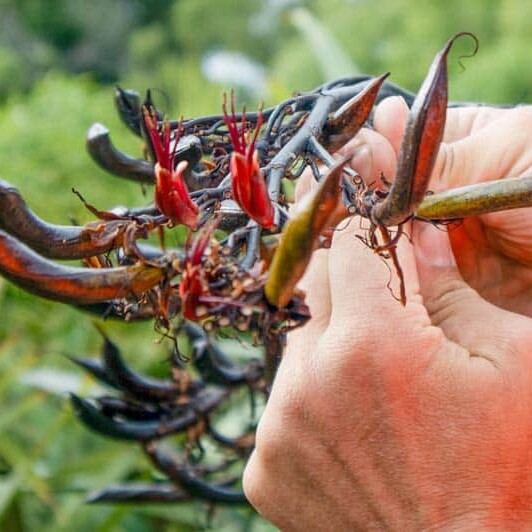
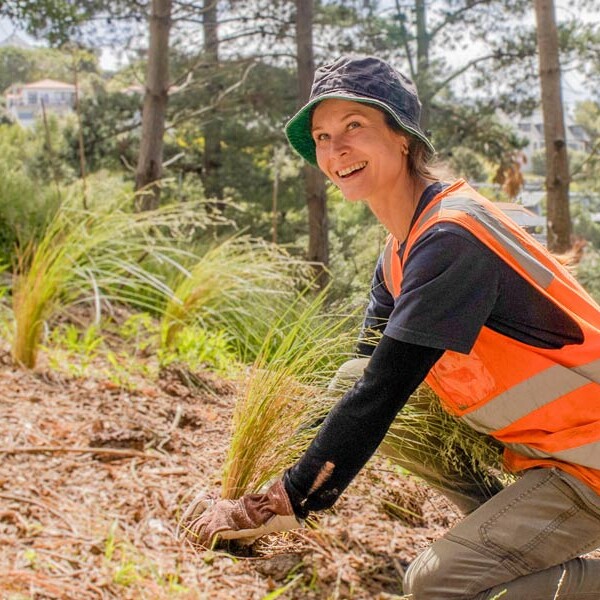
OUR SERVICES
Remediating the land.
Red Tree’s approach provides science-based, prescriptive solutions to the environmental challenges we collectively face. Drawing on innovative technologies and extensive horticultural experience, we are working with government agencies, councils, landowners and Iwi to restore native ecologies across Aotearoa.
Biodiversity and Catchment Scale Restoration
We collaborate with various agencies to restore extensive landscapes to their former ecological glory. With a focus on regional parks, retired farmland, and riparian margins, our holistic approach integrates multiple methods to successfully restore native ecologies, create bird corridors, and sequester carbon.
Through strategic partnerships with Iwi, civic clients, private landowners, and government agencies we deliver restoration projects that transcend regulatory and compliance standards.
Utilising cutting-edge drone technology, we ensure precision in pest identification and post-installation reporting, generating detailed maps of project sites for enhanced monitoring and evaluation.
By transforming marginal land into thriving ecosystems and carbon sinks, we not only mitigate erosion and sedimentation but also preserve indigenous species and protect our valuable waterways. These efforts contribute to the overall enhancement of our natural environment and sustainability initiatives, safeguarding our ecological heritage for future generations.
Wetland Establishment
Wetlands are vital for providing regulating and supporting ecosystem services - they are the hardest working ecologies.
Wetlands provide flood management, erosion control, water purification, nutrient cycling, wildlife habitat, healthy soils, cultural significance, recreational value, and aesthetic beauty.
With relatively simple engineering, low lying water retaining zones previously drained for agriculture purposes, can be restored to vibrant and biodiverse wetlands, detention/retention basins within 2-3 years time.
Whether you are working with 60 or 60,000m2, the principles of biomimcry remain constant and deliver consistent results.
Motorway Landscaping
Motorway landscaping projects are of considerable scale, demanding efficiency and capability in the allocation of time, resources, and labour.
Time management, co-ordination with other contractors, boots on the ground, and robust health and safety processes are critical.
Red Tree has a proven track record of delivering environmental projects of scale, with high cultural significance, and alongside road and rail.
Aerial Mapping and Monitoring
At Red Tree, we offer aerial mapping and monitoring services, using advanced drone technology to provide comprehensive insights into any environment. Our approach involves collecting and processing RGB, multispectral, and thermal data, enabling us to delve deep into various aspects of terrain and ecosystem health.
Through aerial mapping and monitoring, we reveal invaluable information regarding topography, chlorophyll levels informing of plant health and growth, hydration patterns, precise plant identification and counts, and pest identification.
Utilising photogrammetry techniques, we seamlessly stitch together aerial photographs to create detailed representations of landscapes. This process facilitates the generation of digital elevation models and digital surface models, offering comprehensive understandings of terrain features and ecological dynamics.
Our expertise extends beyond data collection, encompassing interpretation, analysis, and actionable recommendations. By distilling complex data into actionable insights, we empower stakeholders to make informed decisions regarding environmental management and conservation efforts.
Land Stabilisation
Following a weather event, natural disaster, or significant erosion period, timing is critical and direct seeding provides a rapid response to stabilise the land. Direct seeding native species has the additional benefit of restoring biodiversity and adding to the depth of stabilisation.
Drones allows immediate response and access to slip sites and removes risk to personnel.
Creating native seed banks in high risk regions is a strategy we promote to regional councils. Seed mixes are prescriptive and dependent on the substrate.
Traditional cereal grain species can be incorporated into seed mixes to achieve rapid germination (12-15 days) fix nitrogen and attract bird life.
Seeding ratios and outcomes is a constant R&D focus for Red Tree and the technique of spreading seeds then applying a binding material such as organic polymer or clay to the top layer of soil to prevent surface erosion is one we have refined over the past five years.
Vegetation Management
In addition to being a key component of all ecological restoration projects, Red Tree offers vegetation management services for fire risk management and pest plant biosecurity.
The key principle behind vegetation management is the understanding and management of pest plant competition with emerging native succession in plant communities.
Pest plant species metabolise exponentially faster than native species. Therefore, the management process begins with monitoring and observation so the most appropriate control methodologies can be employed.
Red Tree is incorporating specialist drone technology with its multispectral mapping capabilities and targeted delivery systems, alongside traditional control methods of hand and mechanical releasing of the plants.
This facilitates greater insight into site conditions, precise application, and versatility in accessing challenging sites.
Red Tree is a certified CAA 102 licence holder and operator, and all pilots hold the appropriate agricultural chemical ratings.
